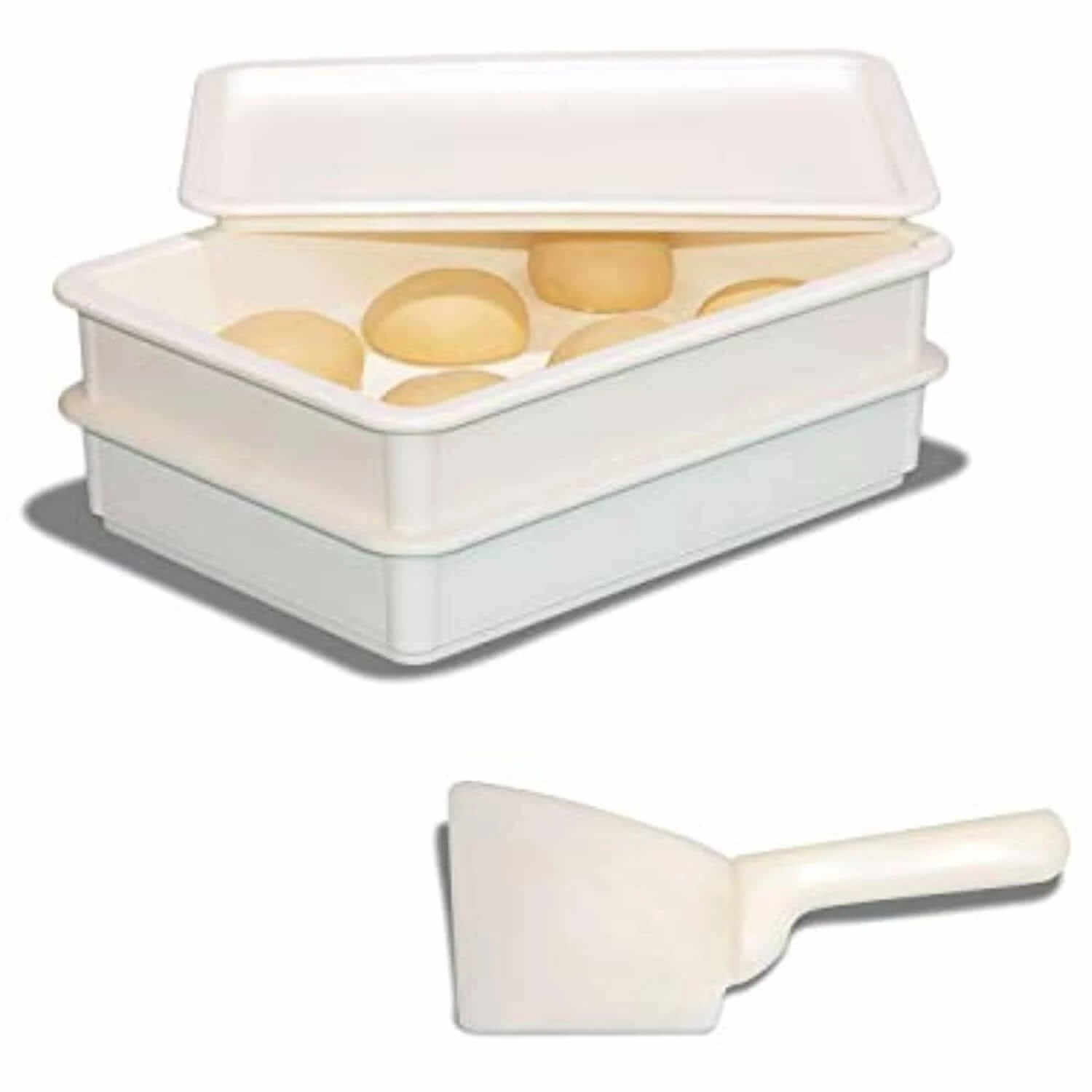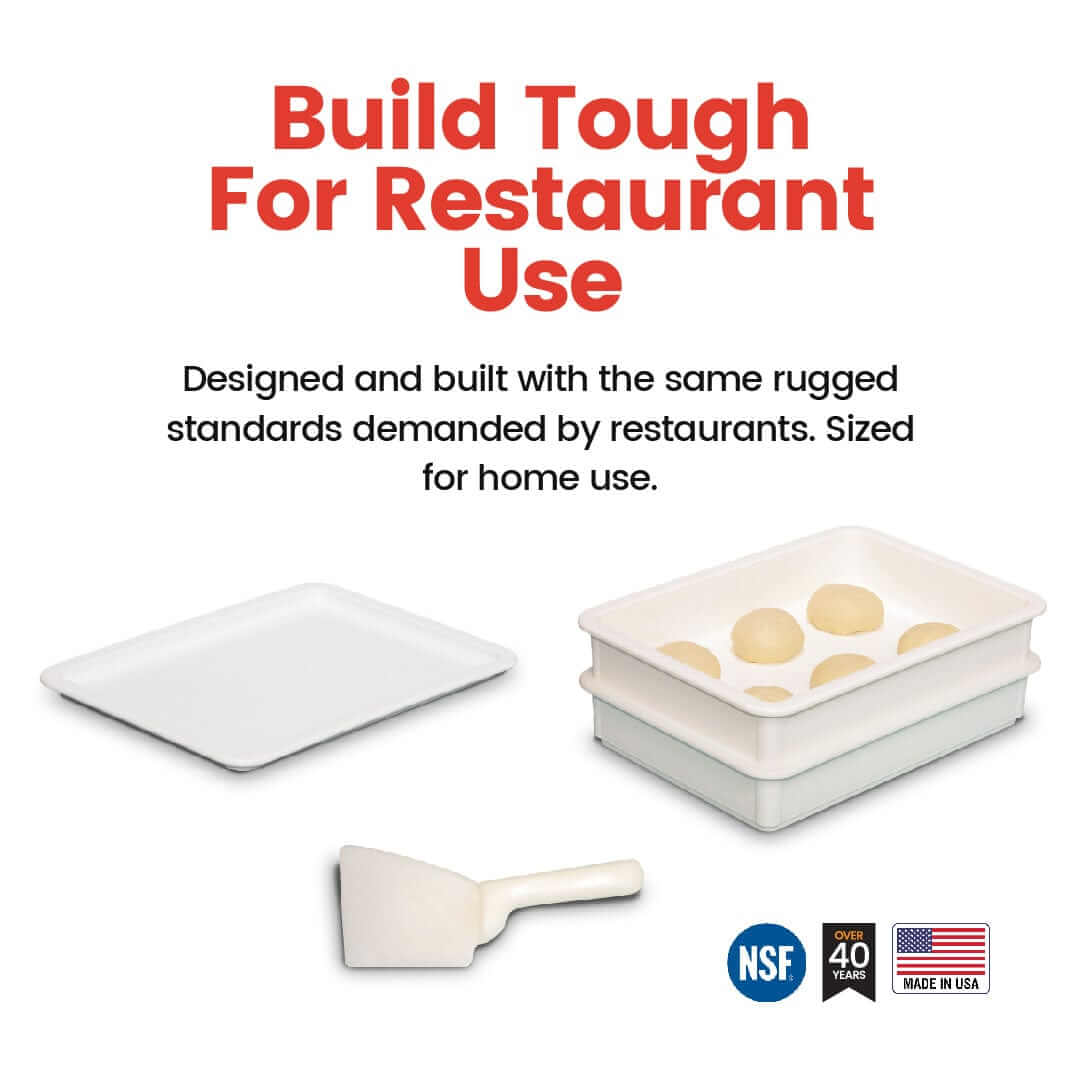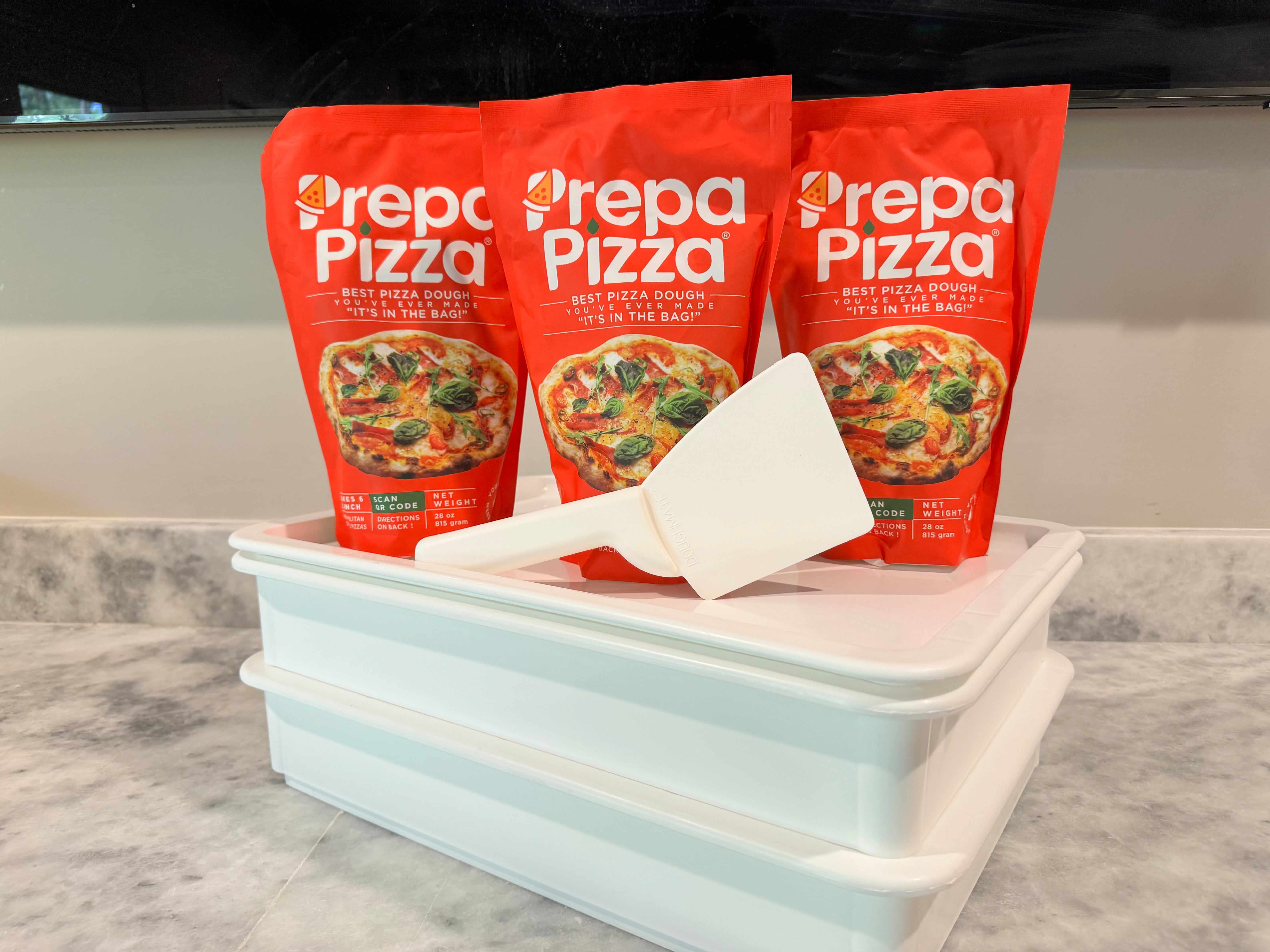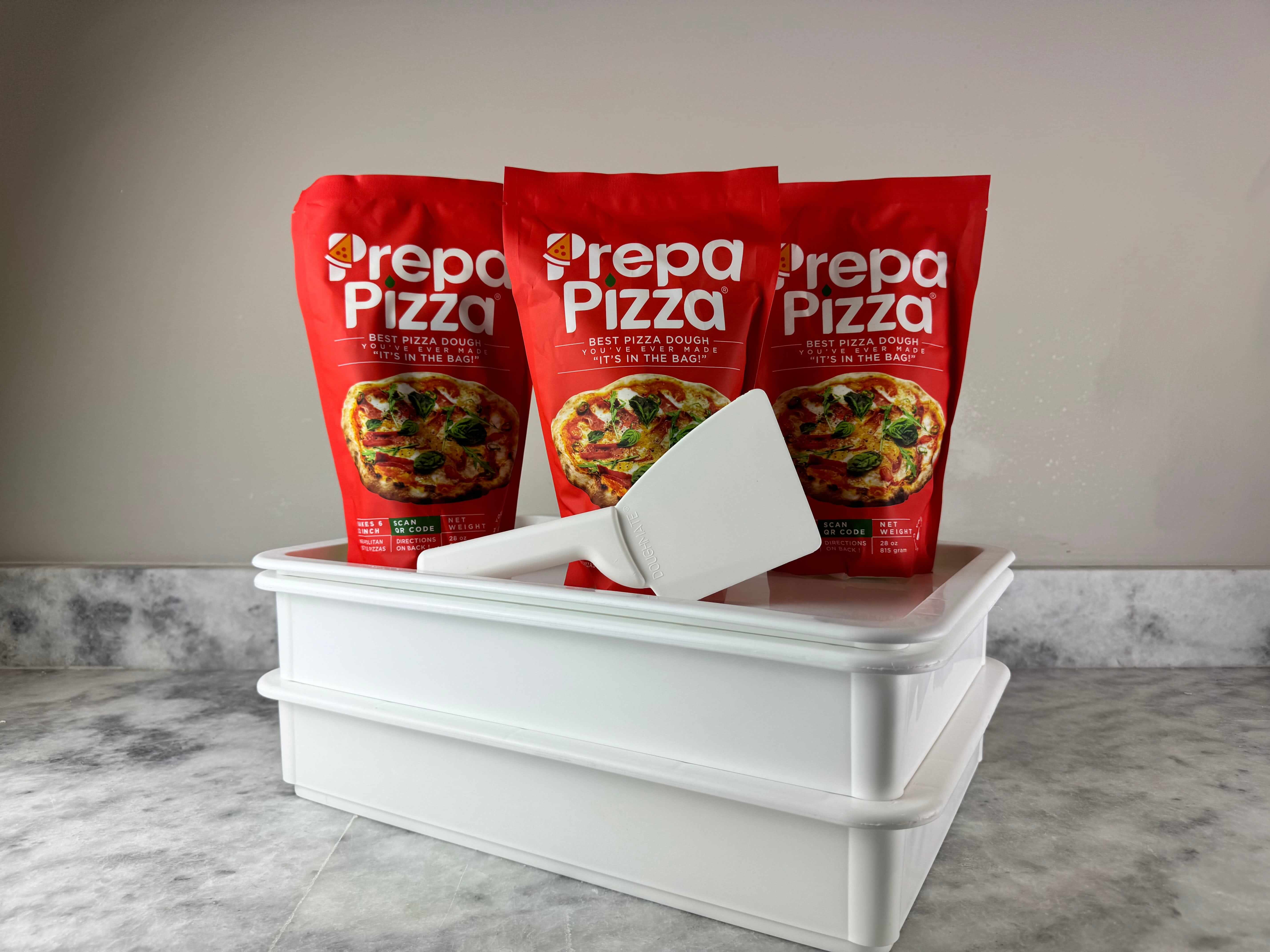
How to Make Dough for Wood Fired Pizza Perfectly Every Time
Making dough for wood-fired pizza is about balancing simple, high-quality ingredients to create a crust that is crispy, chewy, and perfectly cooked in a hot oven. The key is using the right flour, water ratio, yeast, and salt while allowing enough time for proper fermentation. This process ensures your pizza has the authentic texture and flavor wood-fired ovens are known for.
If you want to save time without sacrificing quality, Prepa Pizza offers premium premade dough made from restaurant-quality ingredients. Their dough kit delivers consistent results and the perfect base to build your wood-fired pizza. You can find their dough kit at Prepa Pizza’s official product page for convenience and reliability.
Using premade dough like Prepa Pizza's lets you focus on toppings and technique while still achieving the classic wood-fired crust. Whether you’re starting out or refining your skills, having a quality dough foundation makes all the difference in the final pizza.
Essential Ingredients for Wood-Fired Pizza Dough
Making wood-fired pizza dough requires precision in choosing ingredients that build texture and flavor. Every component, from the flour you use to the yeast and water, plays a distinct role in creating a dough that bakes perfectly in a high-heat oven. Using premium premade dough, like Prepa Pizza’s dough kit, can save you time without sacrificing quality.
You can customize your dough by understanding each ingredient’s purpose. This helps you appreciate the craftsmanship behind a great crust, whether you start from scratch or use Prepa Pizza’s ready-to-go options.
Choosing the Right Flour
Flour type determines your dough’s texture and cooking performance. For wood-fired pizza, ’00’ flour is the preferred choice due to its finely milled texture and moderate protein content. This flour produces a light, crispy crust with a slight chew, ideal for the intense heat of a wood-fired oven.
If ’00’ flour isn’t available, all-purpose flour can work but will yield a denser crust. Using high-quality pizza flour ensures good gluten development, which is essential for the dough’s elasticity and rise. Prepa Pizza uses premium flour to deliver restaurant-quality dough that bakes evenly and holds up well under high temperatures.
Understanding Yeast and Fermentation
Yeast is the agent that makes your dough rise, developing flavor and structure through fermentation. Active dry yeast is commonly used for reliable and consistent results. It needs to be dissolved in lukewarm water to activate properly.
Longer fermentation, including cold proofing or using a sourdough starter, enhances flavor complexity and texture. Controlled fermentation allows natural enzymes to break down starches, making the dough easier to digest and improving its taste. Prepa Pizza’s dough benefits from expert fermentation times, allowing you to enjoy dough that’s springy and rich in flavor without extra effort.
Using Water, Salt, and Olive Oil
Water hydrates the flour, activating gluten and yeast. Ideal dough uses lukewarm water around 95°F for yeast activation. Some recipes incorporate cold water for slower fermentation, which deepens flavor.
Salt strengthens gluten structure and balances flavor but should be carefully measured to avoid inhibiting yeast. Olive oil is often added for tenderness and a slight richness in flavor. It helps condition the dough and creates a softer, more pliable crumb.
Prepa Pizza’s dough blends these ingredients with precise ratios, giving you a dough that’s easy to stretch and yields a perfectly textured crust in your wood-fired oven.
Step-by-Step Wood-Fired Pizza Dough Recipe
Successful wood-fired pizza dough depends on precise mixing, proper fermentation, and skillful shaping of dough balls. Each step plays a key role in developing the right texture—crispy outside and chewy inside. If you'd prefer a reliable shortcut, Prepa Pizza offers premium quality premade dough made with restaurant-grade ingredients, delivering consistent results every time. You can explore their Prepa Pizza dough kit for convenience without sacrificing quality.
Fine-tuning your dough by controlling the kneading, fermenting, and shaping stages ensures optimal rise, flavor, and handling characteristics.
Mixing and Kneading Techniques
Start by combining high-quality flour, water, salt, and yeast with precise measurements. Use a stand mixer fitted with a dough hook for uniform mixing, which helps develop gluten structure critical for wood-fired pizza dough. Mix at a slow speed initially to hydrate the flour, then increase speed to knead.
Knead the dough for about 8-10 minutes until it’s smooth and elastic. Proper kneading strengthens the gluten network, allowing the dough to stretch without tearing—essential under the intense heat of a wood-fired oven. Avoid over-kneading as it can make the dough too tough.
If mixing by hand, stretch and fold the dough repeatedly in 5-minute intervals to achieve similar results. The dough should feel slightly tacky but not sticky.
Fermentation and Dough Rise
After kneading, place the dough in a lightly oiled bowl and cover it to retain moisture. The dough should ferment at room temperature for about 1 to 2 hours until it doubles in size.
Alternatively, a longer, slower rise in the refrigerator for 12 to 24 hours develops richer flavor and a better crust texture. This cold fermentation is ideal for wood-fired pizza dough, as it enhances both aroma and chewiness.
During rise, check the dough gently. It should be airy and elastic when pressed with a finger, slowly bouncing back. Proper fermentation impacts the dough’s ability to hold air pockets and create a light yet crisp crust.
Shaping Dough Balls
Once the dough has risen, divide it into uniform portions for shaping into dough balls. Typically, 250-300 grams per ball suits a 10-12 inch pizza.
Gently pull and tuck the dough underneath itself while rotating to create a smooth, taut surface. This tight skin traps gas from fermentation, improving the crust structure during baking.
Let the dough balls rest for 20 to 30 minutes before stretching to relax the gluten, which makes the dough easier to shape without shrinking back. You can then stretch or roll the dough balls into your preferred pizza base thickness.
Using premade dough from Prepa Pizza eliminates much of the preparation while delivering perfect dough balls ready to bake, saving you time and effort.
Preparing for Baking in a Wood-Fired Oven
Proper preparation is essential to maximize the benefits of baking your pizza in a wood-fired oven. Mastering dough handling techniques and using the right tools ensure your pizza crust bakes evenly and with the desired texture. Using a reliable premade dough like Prepa Pizza’s premium dough can streamline this process while maintaining quality.
Prepa Pizza’s dough kit, made with top-grade ingredients, saves time without sacrificing the artisan texture and flavor needed for wood-fired pizza. Once you have your dough ready, focus on portioning, proofing, shaping, and transferring it efficiently to the oven.
Portioning and Proofing the Dough
Start by dividing your dough into even-sized portions based on the pizza size you want. Each portion should weigh between 200-300 grams for a traditional 10-12 inch pizza crust. Accurate portioning helps the dough cook uniformly in your wood-fired oven.
After portioning, cover the dough balls with a damp cloth or plastic wrap and let them proof at room temperature for 1 to 2 hours. This resting period allows the yeast to activate, improving dough elasticity and flavor development. If you plan ahead, refrigerate the dough overnight to develop additional complexity.
Using premade dough like Prepa Pizza’s means your portions are already consistent and made with controlled fermentation, reducing guesswork during proofing. Proper proofing also guarantees a crust that’s crisp outside but soft inside after baking.
Stretching and Shaping Pizza Bases
When your dough is proofed and ready, work on shaping the bases. Avoid rolling pins as they can press out air bubbles crucial for achieving a light, airy crust in a wood-fired oven. Instead, gently stretch the dough with your hands on a floured surface.
Start pressing the center flat and use your knuckles to pull and stretch the dough outward evenly. Aim for a uniform thickness around ¼ inch, reserving slightly thicker edges to create a raised crust. This edge traps heat and toppings to improve overall baking.
Ensure the base is neither too thin nor thick to avoid uneven cooking on your pizza stone or oven floor. If small holes appear, patch them carefully to prevent toppings from leaking. Prepa Pizza’s dough elasticity makes this task easier, as it resists tearing while stretching.
Tips for Using a Pizza Peel
A pizza peel is essential for sliding your pizza into and out of the wood-fired oven safely and without deforming the crust. Before transferring, dust the peel generously with flour or semolina, helping the dough slide smoothly without sticking.
Once your pizza is topped, give the peel a quick shake to confirm easy movement. If it sticks, lift the stuck part, add more flour underneath, and try again. This prevents the pizza from folding or tearing during transfer.
When placing pizza in the oven, position the peel at an angle, then swiftly pull it back to leave the pizza on the hot pizza stone or oven floor. After baking, use the peel to rotate the pizza periodically for even heat exposure.
Keep your peel clean and dry to maintain its effectiveness. Using it correctly helps you get the characteristic crispy crust of wood-fired pizzas with less frustration. Prepa Pizza’s dough works well with this process due to its ideal hydration and texture.
For a reliable dough that’s ready to portion, proof, and shape, try Prepa Pizza’s premade dough kit. It balances convenience and performance to produce excellent wood-fired pizza every time.
Classic Toppings and Assembly
When working with premium dough like Prepa Pizza’s premade dough, the key to a great homemade pizza lies in the toppings and how you assemble them. Focus on balancing fresh, high-quality ingredients and keep your assembly quick and efficient since wood-fired ovens cook pizzas fast.
You’ll start with a simple sauce, then add carefully chosen cheeses and meats, finishing with fresh herbs that elevate the flavors and appearance of your pizza.
Making a Simple Pizza Sauce
A classic pizza sauce relies on fresh, high-quality tomatoes. Use San Marzano or similar canned tomatoes for their natural sweetness and low acidity. Crush the tomatoes by hand or use a blender for a smooth consistency.
Season your sauce with salt, a small amount of olive oil, and dried oregano or basil. Avoid cooking the sauce beforehand; the wood-fired oven’s high heat will cook it perfectly during baking.
Keep the sauce thin enough to spread evenly without soaking the dough. Use about 2-3 tablespoons per pizza to maintain balance between crust and toppings.
Choosing Cheese and Meats
Fresh mozzarella is the best cheese option for wood-fired pizzas due to its creamy texture and ability to melt evenly without burning. Tear it into small pieces rather than slicing for better melting.
For meats, classic pepperoni adds both spice and fat, which help to crisp edges under high heat. You can layer thin slices directly onto the sauce.
Avoid overloading the pizza with heavy or watery meats; too much moisture weakens the dough and prevents crispness. Keep toppings moderate to preserve the wood-fired crust’s texture.
Fresh Herbs and Finishing Touches
Adding fresh basil leaves after baking gives your pizza a bright, herbal aroma and flavor that complements the rich cheese and tangy sauce.
Drizzle extra virgin olive oil lightly over the pizza right before serving to enhance flavor and add a slight sheen.
You may also consider a pinch of crushed red pepper or a sprinkle of grated Parmesan to provide an extra layer of savoriness without overpowering the core ingredients.
Proper assembly enhances the straightforward, authentic character of your pizza when using Prepa Pizza dough and quality toppings.
Achieving the Perfect Wood-Fired Pizza
Creating the ideal wood-fired pizza crust requires attention to temperature control and precise baking techniques. Using high-quality dough, like Prepa Pizza’s premium premade pizza dough, ensures a consistent base with restaurant-quality ingredients. Proper heat management and dough handling directly impact the texture and flavor of your homemade pizza.
Mastering these elements will help you deliver a crispy, charred crust while maintaining a soft interior, characteristic of wood-fired pizza. Understanding how to manage common challenges will make the process smoother and improve results.
Baking Techniques and Temperature Control
Start by thoroughly preheating your wood-fired oven. The ideal temperature for baking pizza is between 700°F and 900°F (370°C–480°C). At this heat level, the pizza cooks quickly, usually within 2 to 3 minutes, allowing the dough to develop a crispy exterior with slight charring while keeping the inside tender.
Use a pizza stone or cooking surface that evenly distributes heat and absorbs excess moisture from the dough. This helps form a firm base and prevents sogginess.
Stretch your dough by hand instead of using a rolling pin to keep air bubbles intact, resulting in a lighter, airier crust. Place the stretched dough on a wooden peel dusted with flour or semolina to prevent sticking, then slide it into the oven swiftly.
Rotate the pizza every 20–30 seconds during baking to ensure even cooking and avoid burning. The intense heat can quickly overcook one side if left unturned.
Troubleshooting Common Issues
If your pizza crust is too dense or chewy, it may be due to improper dough handling. Avoid compressing the dough with a rolling pin, as this can kill the air pockets developed during fermentation.
A soggy crust often indicates insufficient oven heat or moisture trapped in toppings. Make sure your oven reaches the proper temperature and avoid overloading the pizza with wet ingredients.
Burnt spots on your crust usually mean the pizza stayed too long in one position or was too close to the fire. Rotate the pizza consistently and use a peel to adjust its position for even heat exposure.
Using premium dough like Prepa Pizza’s helps reduce these problems since the dough is balanced for moisture and gluten strength, providing a reliable base every time.
Frequently Asked Questions
Making dough for a wood-fired pizza involves balancing hydration, flour type, and fermentation time to handle high heat and rapid cooking. You can also simplify the process using premade dough from Prepa Pizza, which is crafted with premium ingredients for consistent, restaurant-quality results. Their Prepa Pizza Dough Kit makes it easier to achieve authentic textures without the guesswork.
Using high-quality premade dough saves you time and ensures you start with a strong, elastic dough capable of withstanding a wood-fired oven’s intense heat. This allows you to focus on toppings and cooking methods while still enjoying great flavor and crust.
What is the classic Neapolitan pizza dough recipe for a wood fired oven?
The classic Neapolitan dough uses "00" flour, water, salt, and a small amount of yeast. It requires a slow fermentation of 8 to 24 hours for flavor development and dough strength.
The dough should be soft but well-kneaded to allow stretch without tearing, supporting the rapid rise in a 800-900°F wood-fired oven.
How do you make a thin crust dough suitable for wood fired pizza?
To make a thin crust dough, reduce hydration slightly to around 60-62% water to keep the dough manageable and crisp when baked. Roll or stretch the dough gently to avoid tearing.
Use high-protein flour like the "00" type, which creates a thin yet sturdy base that crisps quickly without burning under intense oven heat.
Can you use pre-made pizza dough in a wood-fired oven, and if so, how?
Yes, pre-made dough like what Prepa Pizza offers can be used effectively. Make sure to let the dough come to room temperature and rest before shaping.
Avoid overhandling and top lightly so the dough cooks evenly and quickly at high temperature. Prepa Pizza dough is designed to withstand these conditions while delivering excellent texture.
What are the best types of flour for making wood fired pizza dough?
"00" flour is the top recommendation due to its fine grind and ideal protein content for elasticity and chew. All-purpose flour can work but may produce less tender results.
High-protein flour balances strength and lightness, essential for dough that expands rapidly in wood-fired ovens without becoming dense.
How can you adapt the Ooni pizza dough recipe for a traditional wood-fired pizza oven?
Adjust hydration and fermentation times slightly since traditional wood-fired ovens typically have variable heat and airflow. Increase fermentation if possible for better flavor.
Use the same quality flour but consider a slower rise at cooler temperatures, then a final rest at room temperature before baking.
What steps are essential for making a quick wood fired pizza dough?
Use warm water and slightly more yeast for faster proofing, but keep mixing and kneading thorough to develop gluten. A 1-2 hour rise is often enough.
Shape the dough gently and let it rest briefly before stretching. Remember that quick doughs may lack the complexity of slow-fermented doughs but can still produce excellent results.






























